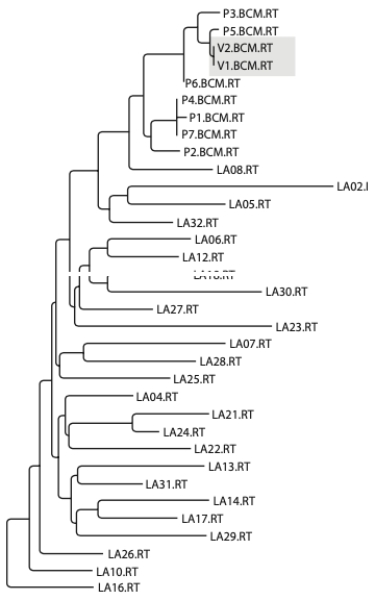This is a true story. A gastroenterologist from Lafayette, LA was accused of infecting his girlfriend with HIV by injecting her with a syringe containing HIV-infected blood from one of his patients. The victim (the girlfriend) claimed that the doctor injected her during an argument. However, the victim was also a nurse and so conceivably may have had contact with HIV-infected blood through her job. Given below is a phylogenetic tree constructed using HIV sequences from the victim (denoted with a V in the label), HIV sequences from the patient whose blood was allegedly in the syringe that the doctor injected into the victim (denoted by a P in the label), and HIV sequences representing much of the diversity of HIV strains from the Lafayette area during the time of the incident (denoted by LA in the label). Is the tree consistent with the prosecution's case that the doctor injected the victim with HIV-infected blood from his patient? Why or why not? 
Definitions:
Q6: Gene duplication<br>A) results in genes that are
Q7: The sickle-cell anemia allele, S, experiences strong
Q18: According to the idea of entitlement, some
Q21: Rohan is asked by his supervisors to
Q22: Which chromosome is the BRCA1 gene located
Q25: Nicolaus Steno<br>A) was one of the first
Q47: Charismatic leaders are often characterized as:<br>A) having
Q53: Explain, from an evolutionary perspective, why diseases
Q59: Understanding how selection affects virulence has led
Q60: The gene for snake venom crotamine is